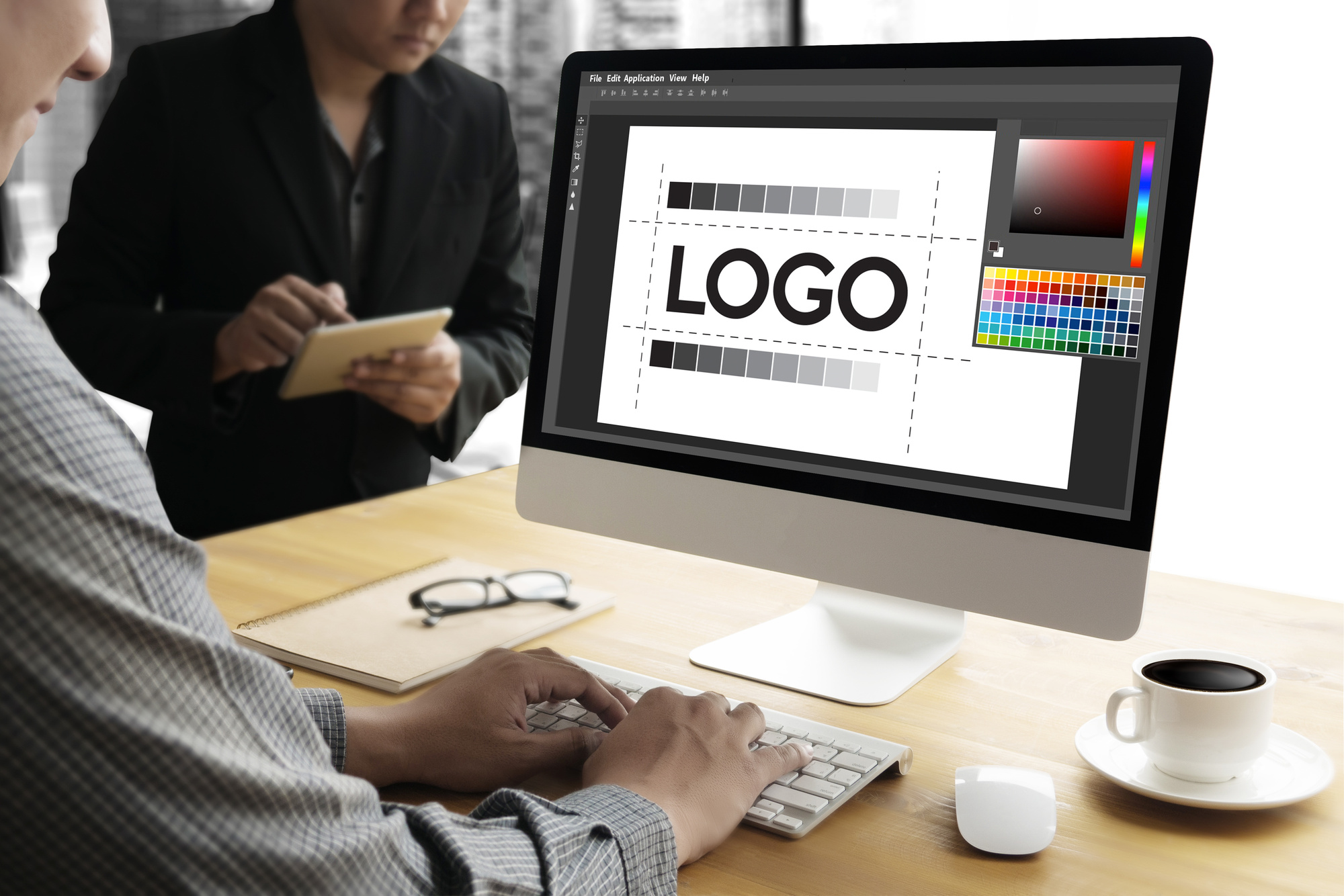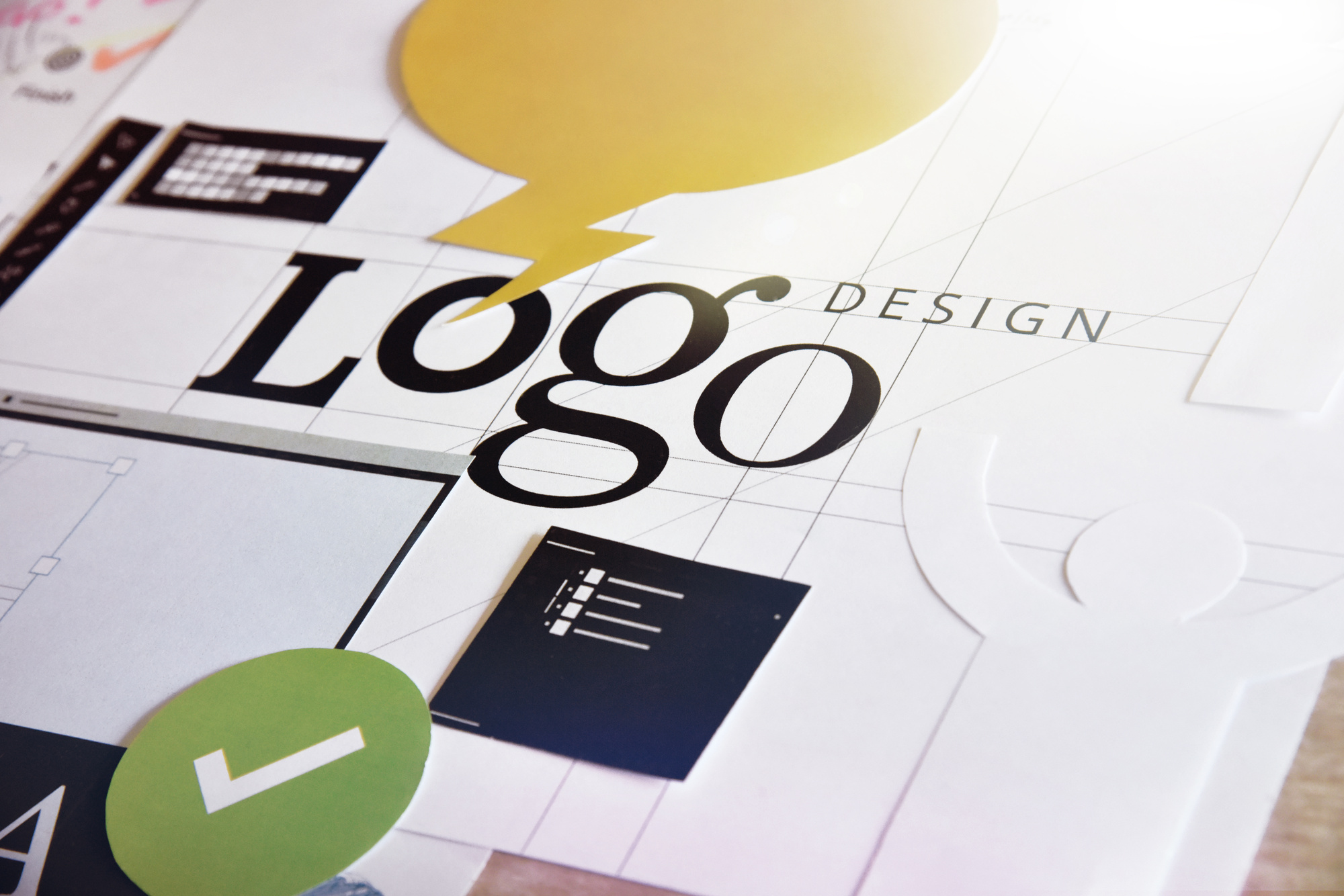5 Animated Logo Ideas for YouTube Marketing
Posted on March 19, 2018 by Logo Design Tips and Tricks

When it comes to branding your business, having a solid logo design is one of the most important aspects to focus on. It will serve to both help you stand out from the competition and also draw your audience in.
People love video because it’s the easiest form of media to consume. Therefore, you should always incorporate YouTube into your marketing strategy. When it comes to logos, videos are a great way to take things a step further.
Having an animated logo can make your brand that much more memorable in the eyes of your consumers. But, there are things you need to keep in mind when it comes to YouTube marketing.
Let’s take a look at animation ideas to help you stand out.
1. Add Glow
Adding a glow effect to your logo is a simple way to make it more eye-catching to your viewers. You have a lot of room for customization, as well.
You could make your logo’s glow gradually brighter over time, or you could maintain a certain level of the effect until you transition into the rest of your video.
Regardless of how you incorporate it, a glow effect is a quick fix for logos that need a little more character to them.
If you find yourself with concepts for a new logo, you can use our logo maker software to get your ideas out.
2. Animated Written Text
Written text animation is a great animated logo solution for your business’s name or slogan.
The premise is simple: rather than having the text fade onscreen, each letter could be individually animated so that it looks someone is writing it out by hand.
In a society full of people with short attention spans, using animated text is a solid way to hold your viewers’ interest.
3. Incorporate Your Business Theme
This is one of the most important animated logo ideas to keep in mind due to the endless amount of possibilities it has.
For instance, let’s assume that your company is associated with sporting goods. You could incorporate sports themes into your logo animation, either with text or with the logo itself.
How you implement this is up to you, and the only limit is your creativity.
4. Sync Your Logo with Your Intro Music
Your business doesn’t have to be in the music industry to make use of this. Most animated logos have a jingle or song that plays when they first appear onscreen.
Having your logo pulse in time with the music (such as with bass or a kick drum) can add an extra layer to the animation that consumers are sure to appreciate.
5. Hide and Reveal
A logo that is both simple and intriguing, such as the one you’ll find on https://www.brokedick.com, can be a powerful asset.
But, you can still take a simple logo a step further. Like glow effects, hide and reveal animation is easy to implement and can apply to any type of business.
Having a logo start out small and inconspicuous before bringing in the rest of the text and image is a much more engaging way to present your brand than bringing the whole logo in at once.
Take Your Time with Your Animated Logo
Since you will likely reuse this animation over and over, it’s important to get it right the first time. This will allow you to get the most out of your time (and budget) that you put into working on it.
Regardless of the industry, logos are one of the many ways you can stand out from competitors in your industry. To learn more about their importance for your business, check out our blog.
How to Design Your Own Logo for a Tshirt
Posted on March 15, 2018 by Logo Design Tips and Tricks

Did you know that you can design your own awesome tshirt logo?
Logo design is a great way to promote your brand. With a cool, unique tshirt logo, you can become a walking advertisement for your own business. To promote the brand even more, give shirts to your customers and employees.
If the logo becomes popular enough, you can even start selling the tshirts in an online store, creating a whole new revenue stream!
But first, you need to make the logo. Wondering how to get started? We’re here to help – in this guide, we’ll walk you through how to design your own tshirt logo. Keep reading for our top tshirt logo design tips.
1. Seek Inspiration
Before you can design the logo for your tshirts, you’ll need to get inspired. Logo design is an artistic, creative process, so tap into your inner artist before you get to work.
You can research online, exploring different company logos on sites like Yizzam. Figure out what designs appeal to you, then compare them to see what they all have in common. This will help you decide what kind of design is perfect for you.
You can also just keep an eye out for a great tshirt logo in your day to day life. People wear branded shirts all the time. Which ones catch your eye?
The logos that stick in your mind the most are the ones you should draw inspiration from. After a while, you’ll probably see that the different logos you like have many things in common.
2. Learn About Logos
It’s also a good idea to learn about the history and concept of logos. What makes an effective logo?
The best ones tend to be unique, visual, memorable, and not too complicated. Your logo also has to look good on a t-shirt. What will make people want to wear a logo on their clothing?
3. Follow a Process
The creative process can look different for everyone. However, if you’re not sure what steps to follow, it can be good to have a roadmap.
Consider a process that goes something like this:
- Research: look at what’s out there, and what your competitors are doing. Decide how you want your logo to fit in or stand out. Look at modern logo trends, and balance that with the need for a logo to be timeless (or get updated).
- Concept: sketch or design a few logos based on your ideas.
- Reflect: spend a few days away from the project and see how you feel about it. When you come back, the right direction to go will often be clear.
- Feedback: present the logo to a small focus group and get some feedback. Make changes accordingly until you come to a final draft.
4. Know Your Audience
While you’re researching and designing, you’ll need to keep your audience in mind. Who do you want to reach with this logo? Who do you want to wear your tshirts? Who do you want to notice them?
Your logo will communicate something, but different audiences often read messages in different ways. It’s a good idea to include your target audience members in the group you get feedback from. That way, you can tell if your logo is really conveying the message that you want it to.
5. Save Your Work
As you work to design your logo, you’ll probably work through a number of different sketches and design ideas along the way.
Make sure to save your work, rather than throwing away the sketches you decide not to go with. These can be helpful later if you decide to do a redesign based on feedback from your focus group. If you decide to make another logo later, your sketches can also be helpful.
6. Try a Mood Board
If you get stuck, get creative with a mood board or vision board.
Logos are all about tying different elements together: color, shape, text, and so on. With a mood board, you can experiment with different elements, and envision how they might work together in a tshirt logo.
7. Don’t Get Too Trendy
There will always be fads in logo design. However, you need to balance the desire for trendiness with the need for the logo to be evergreen.
Of course, if you intend to release a new tshirt design every few months, you may want to go with a trendy logo. But if you want this logo to last for years to come, choose a design that will remain relevant, rather than a trend that will soon be forgotten.
8. Change Your Design Medium
If you’re hitting a brick wall on ideas, you might just need to try designing with a different medium.
If you’ve been trying to come up with a design on a computer, try switching to pen and paper for a few days instead – or vice versa. Sometimes, this kind of change is all you’ll need to spark creativity and come up with the perfect design.
Don’t worry about your skill level here, either. Your paper-and-pen sketches don’t need to be great: this is just a way to spark ideas. You can always clean up the image with a computer later.
9. Consider Fonts
Words aren’t necessary for logos, but they’re a great way to create an attention-grabbing tshirt. If you decide to incorporate words into your logo, though, you’ll need to take font into consideration.
Different fonts work for different purposes. A sans-serif font looks more modern, while a serif font can look old-fashioned. Hard-to-read fonts aren’t ideal for tshirts, since the goal is to allow people to read the text quickly.
10. Consider Color
Will you be printing your logo on tshirts of a specific color? If so, that will affect the colors you should choose for your logo. A black logo becomes hard to see on a navy-blue shirt, for example.
Get Your Tshirt Logo Printed!
Once you’ve decided on the perfect logo design, getting the shirts printed is the only thing you have left to do.
This is the fun part – you can choose the perfect shirt colors and styles to display your logo.
However, creating the logo can be fun as well, when you use an online logo maker. Start designing your logo with our logo maker today!
A Logo Designer’s Guide to Logo Development
Posted on March 14, 2018 by Logo Design Tips and Tricks

Every business needs a logo. Sometimes a business is just starting out and building out their marketing collateral. Other times, the business is rebranding and looking for a fresh take.
No matter who your client is or how old the company, the logo development process is fairly consistent. There’s always some competitor research involved. There are brand-related questions you’ll ask every client.
That said, there are some tricks that speed the process along and leave your clients happier in the long run.
So let’s dig deep into some areas of logo development and see if we can help to streamline your process.
Start Logo Development with Competitor Research
Before you draw your first sketch, you must research your client’s competitors. It won’t matter how great your design is if it resembles an existing logo.
This isn’t just a question of avoiding confusion, though that matters. A new logo that resembles an existing, better-established logo just works as a marketing tool for another business. You don’t help your client by advertising for someone else.
There’s also a legal issue at play. Many businesses trademark their logo. Give your client a logo that looks like someone else’s and you create a potential legal problem.
No one will thank you for opening up that can of worms.
Of course, you can’t possibly research every logo in existence. There’s just too many of them. The best you can offer is a good faith effort at not recreating a competitor’s logo.
Make Sure You Understand Your Client’s Brand
You can’t design an effective logo if you don’t get what your client’s brand is about. That doesn’t mean you must read their mission statement, but it does warrant a conversation. Make sure you ask a few key questions, such as:
- What are your brand values?
- How do you communicate those values to customers?
- Do customers perceive your brand that way you intend?
The answers to those questions will inform almost all of your design choices. A company that aims for a light, cheery brand isn’t well-served by a heavy font or dark colors. A business with a reputation for cool professionalism is best served by capitalizing on that reputation.
Simplicity
There is no greater friend in logo development than simplicity. There are a few important reasons for that.
Remembering simple things is easier than remembering complex things. For example, almost everyone knows that 2 + 2 = 4. On the other hand, how many people remember the Quadratic Equation from their high school math classes?
It’s more complicated and that makes it harder to remember.
Think of any images you create as symbolic. You’re trying to evoke an idea, rather than paint a scene.
You can see a great example of simplicity at work in a logo over at The Marine Battery. The anchor image is incredibly simple, but it evokes the idea of the sea.
Play Around with Several Ideas
Another key element of good logo development is not getting hung up on your first idea. Coming first doesn’t make an idea good or even viable. On the whole, first ideas are either vague or overly ambitious.
The brain is pretty lazy when you get right down to it. If it can work less in reaching a goal, it will.
Say your new client is a self-employed bricklayer. Your brain probably jumped straight to a picture of a brick or brick wall.
What about a freelance writer? Your brain probably conjured an image of a keyboard or a pen.
The problem is that you almost certainly share most of the same cultural and social touchstones as your competitors. That means their brains also went straight to some variant of those images.
Think of your first few ideas as cobweb clearing exercises. They let you deal with the obvious and the derivative. Once you get through those, you can start the real creative work.
Color
There is always the temptation to avoid color in logo development, but don’t go there too fast. Color is a primary reason around 85% of customers choose a product.
Again, the goal here is simplicity. Limit your palette to a few colors. If the business already uses specific colors for it’s marketing collateral, most of the decision is made for you. Consistency in branding more or less requires you stick with those colors.
If the business is new or hasn’t settled on a color scheme, reference their answers about what their brand represents. Choose colors that dovetail with their intentions.
If all else fails, look at broader industry trends. Is there consistency in color choices? If so, start with those colors.
The client can always ask for different colors if they aren’t happy.
It Must Scale
You can’t predict where a client will use a logo these days. For now, it might just go on their business cards and letterhead. It could turn up almost anywhere down the road, such as:
- The client’s website
- Social media accounts
- Product packaging
- Billboards
- Television ads
- Brochures
That means the logo must scale and still look good. The less complicated the image is, the better it scales. So there’s another argument for simplicity.
The real trick here is making sure you give the client the logo image in a scalable file type, like Scalable Vector Graphics. That lets them use it at any size without any grainy pixelation.
Parting Thoughts
Good logo development is about striking a balance between conflicting forces.
You must balance creativity against the practical reality of existing logos. You must balance your own view of a brand against the company’s stated brand values.
You should strive for simplicity, even when your imagination takes you toward complexity. Developing multiple ideas is more difficult, but first ideas are often stale.
Using color requires some restraint because it’s easy to go overboard. Yet, it also helps drive sales when done well.
The one straightforward part is that you should always use a file format that lets the image scale. It simplifies your clients’ lives in the long run.
Looking for another way to streamline your logo development process? Instead of building logos from scratch on your own computer, try out our free logo maker.
5 Reasons Your AV Company Needs A Custom Logo
Posted on March 12, 2018 by Logo Design Tips and Tricks

Your AV company is in the business of communicating through images and sound, so why is your logo so generic?
There’s a reason why top global companies spend millions on logos. It only takes a few seconds to form a first impression of a logo and as little as five impressions to secure brand loyalty.
With only a few seconds to impress, what do you do? Ditch the stock logos and think like your favorite brands!
Let’s take a look at five more reasons to leverage logo customization.
Color Boosts Brand Recognition by 80%
Your AV company has to stand out in a sea of competition. But something as simple as color can increase recognition by as much as 80%.
Your logo plays a vital role in leveraging color in brand strategy, but you can’t just throw paint on a canvas and see what sticks. Color and mood are inextricably linked. Ask yourself, what do you want customers to feel about your brand?
As an AV company, consider the psychological impact of the following colors:
“Welcoming” light blue, as seen in logos from Walmart and Airbnb.
Purple conveys both calmness and creativity, which you can see from Yahoo! and Hallmark’s logo.
Red elicits a sense of urgency, which makes it perfect for CNN, CVS, and YouTube.
Yellow stimulates the mind and elicits a sense of optimism, as you can see in the famous Shell logo, Best Buy, and National Geographic.
The color white represents wholeness, completeness, and feelings of hope, as leveraged by Atema Partners, Adidas, Apple, and ABC.
Don’t miss an opportunity by treating your logo colors like an afterthought. Let’s dig in more into the true value of brand recognition.
Brand Recognition Starts Young
Going without a decent logo can have more consequences than you think. An ill-conceived logo can completely misrepresent your business. Just ask Pepsi and the 2012 Olympic Games.
But a compelling logo can help turn a new brand into a household name, like Apple, Nike, and The Walt Disney Company. And more recently, Twitter, Slack, Uber, and Netflix. And kids play a much bigger role than you ever would have thought.
Studies show that brand loyalty is established as early as six years old. In fact, more than 90% of children surveyed can correctly match brands to their logos. This means if kids absorb your logo at a young age they’re more likely to be customers as adults.
95% of Purchase Decisions Are Subconscious
Need another powerful reason for a custom logo? Consumers may have less power over their purchases than you think. This comes down to the power of the subconscious mind.
What does these mean for your logo? Everything.
Harvard Business school professor, Gerald Zaltman, found that 95% of purchase decisions are dictated by the subconscious mind. According to Zaltman, your senses help guide your subconscious mind, and there’s no better way to evoke positive emotion than with an effective logo.
An AV company, in particular, can look to Zaltman’s communication industry example. Aside from color and shape, Zaltman found that purchases are also linked to tactile experiences. That’s why the look of “finishing” and “sheen” are particularly effective in audiovisual logos.
You may not be able to control your customers’ subconscious mind, but leveraging the psychology of design does give you an advantage.
Logos Communicate Who You Are
Consumers hate mixed messages. Does your logo clearly represent what your AV company is really about? You need visual impact to clearly communicate your values and principles with little to no words.
That’s what an effective logo brings to the table. Through your logo, you can tell the world what kind of AV company you have. Do you want to appeal to high-end clientele or consumers who want discount AV services?
The best way to truly tell if your logo communicates with your target base is through focus groups, test audiences, user testing, and surveys. This will let you know whether you’re ready to launch or go back to the drawing board.
Logos Give Your AV Company Credibility
A poor quality logo screams ‘unprofessional’, but a complicated logo can be just as bad. So how can you stand out without taking a chance on logo design?
Truth is, a simple and clean logo design is often the most credible. Just look at Google, Apple, Nike, Microsoft, and Spotify. Four prolific companies with simple logos and colors.
What does this mean? Editing matters. Forget crazy gimmicks and make sure your logo is clear, professional, and relevant. This will help you establish your AV brand in the industry.
Here are a few more ways to establish credibility and trustworthiness in logo design:
- Pick a logo symbol that’s relevant to AV
- Keep it versatile
- Choose a modern font
- Use capital letters
- Use a strong shape like a triangle
Of course, this means quality matters. But don’t hire a logo designer just yet. Learn how to create and customize your own AV company logo with this quick and easy design guide.
Get Started
You know why you need a custom logo, now it’s time to give your AV company a design that matches its mission.
Time is of the essence in business, so start brainstorming your logo now to improve your company’s brand recognition, consumer perception, and credibility in the industry.
Make sure to bookmark these tips and tricks and check back often for the latest in AV logo design.








